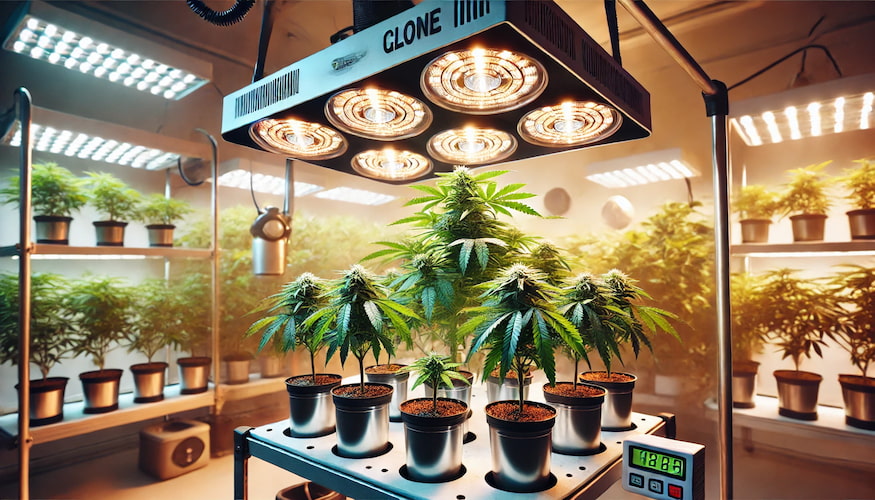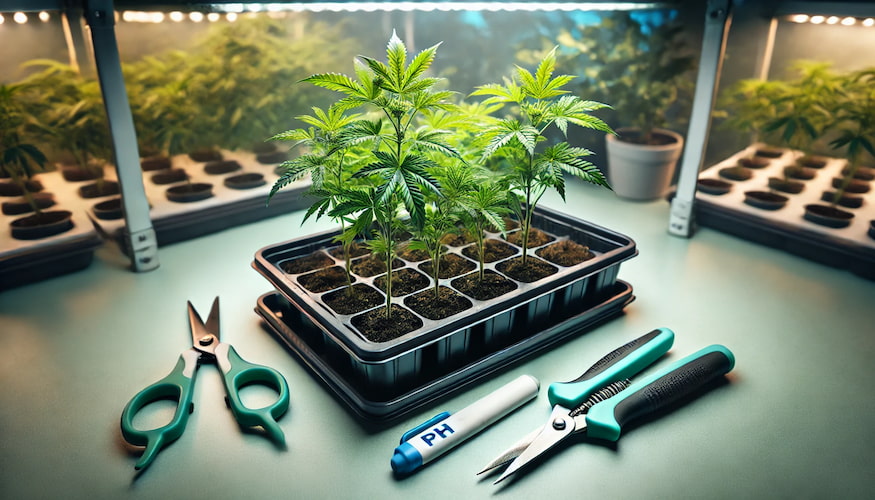Introduction: The Power of Light in Cannabis Cultivation
Hey there, light lovers! James Bean from IWantClones.com here. When it comes to growing cannabis clones, light is like the engine of your grow operation. It drives photosynthesis, influences growth patterns, and ultimately determines the quality and quantity of your harvest. In this guide, we’ll shed light on everything you need to know about illuminating your cannabis clones for optimal growth.
Why Light Matters for Cannabis Clones
Light affects nearly every aspect of your clones’ development:
- Root development
- Vegetative growth rate
- Node spacing
- Flowering trigger and duration
- Cannabinoid and terpene production
Key Components of Cannabis Lighting
Success in cannabis lighting hinges on three main factors:
- Best Light Types: Choosing the right lighting technology
- Light Schedules: Providing the correct duration of light and dark periods
- Light Intensity: Ensuring the proper strength of light for each growth stage
We’ll explore each of these in detail in our sub-guides:
- Best Light Types for Cannabis Clones
- Optimal Light Schedules for Cannabis
- Understanding Light Intensity for Cannabis
Choosing the Right Lights
Different growth stages require different types of light:
Cloning/Rooting Stage
- Requirements: Low intensity, cool temperature lights
- Options: Fluorescent (CFL, T5) or low-power LEDs
Vegetative Stage
- Requirements: Higher intensity, full-spectrum light
- Options: HID (MH), LED, or high-output fluorescents
Flowering Stage
- Requirements: High intensity, red-spectrum heavy light
- Options: HID (HPS), full-spectrum LED

Light Schedules Throughout the Growth Cycle
- Cloning: 18-24 hours of light per day
- Vegetative: 18-24 hours of light per day
- Flowering: 12 hours of light, 12 hours of darkness
Understanding Light Intensity
Measure light intensity in PAR (Photosynthetically Active Radiation):
- Cloning: 200-400 PPFD (μmol/m²/s)
- Vegetative: 400-600 PPFD
- Flowering: 600-1000 PPFD
Use a PAR meter for accurate measurements.
Common Lighting Mistakes to Avoid
- Insufficient light leading to stretching
- Light burn from too much intensity
- Incorrect light cycles disrupting growth or flowering
- Uneven light distribution creating “hot spots”
- Using the wrong spectrum for the growth stage
Advanced Lighting Techniques
Light Spectrum Manipulation
- Enhance vegetative growth with blue-heavy spectrum
- Boost flowering with red-heavy spectrum
Light Stress Training (LST)
- Use strategic lighting to shape plant growth
UV Supplementation
- Add UV light to potentially increase trichome production
Light Deprivation
- Control flowering in greenhouse environments
Lighting and Environment Interaction
Remember, lighting affects other environmental factors:
- Heat: Most lights produce heat, affecting temperature
- Humidity: Light intensity can influence transpiration rates
- CO2 Levels: Higher light intensity allows for higher CO2 utilization
Energy Efficiency Considerations
Balancing light quality with energy costs:
- LED lights offer high efficiency but higher upfront costs
- HID lights are powerful but less energy-efficient
- Consider long-term operational costs in your lighting decisions
Troubleshooting Light-Related Issues
- Stretching: Increase light intensity or lower lights
- Leaf Burn: Raise lights or decrease intensity
- Slow Growth: Check for adequate intensity and correct spectrum
- Irregular Flowering: Ensure light-proof dark periods
Conclusion: Lighting the Way to Cultivation Success
Mastering the light requirements for your cannabis clones is crucial for cultivating healthy, high-yielding plants. By understanding the best light types, optimal schedules, and proper intensities, you’re setting the stage for cultivation success.
Remember, the right light is the key to unlocking your clones’ full potential. Happy growing, and may your garden always be perfectly illuminated!














